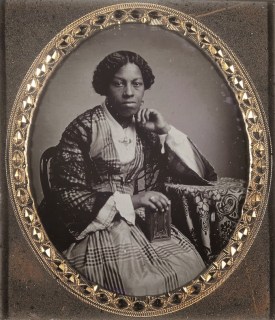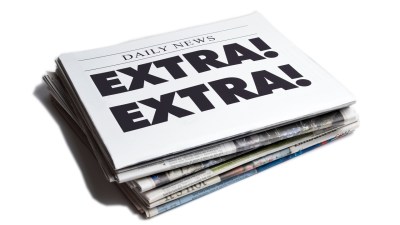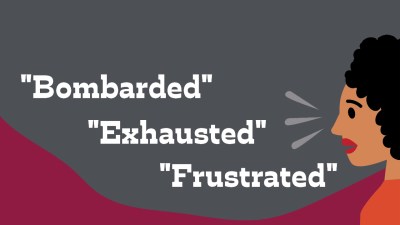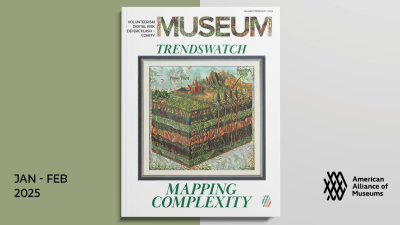
Here is another brief brain jotting as I take a break from writing TrendsWatch 2015.
I’ve been vastly enjoying blog postsand tweets from Frank Vagnone, author of the Anarchist Guide to Historic House Museums. I love the way he systematically challenges every assumption about what a house museum is and how they operate. He inspired me to set my imagination loose on reinventing the genre, and here’s my nugget of an idea for an historic house I would like to visit: the Museum of Alternative Histories.
Alt history is the imaginative fiction of “what if?” It starts by identifying a key event that shaped our current world, and asks how things may have played out had that event taken a different turn. (Here is a list of such “what if” questions and associated fiction.) Livy pioneered the genre in about 25 BC when he explored what might have happened had Alexander the Great marched his armies west instead of east, and gone to war with Rome. In 1836 Louis Geoffroy imagined what would have happened had Napoleon successfully invaded first Russia and then England. Given the wealth of (real) historical detail an author can draw on in crafting these scenarios, alt history is a useful exercise in how to explore the Cone of Plausibility, and develop skills for imagining the various ways history might play out from this time forward.
Enter the alt-historic house. I imagine a house, in Charleston, say, which reflects three histories of the United States: the one that actually occurred (at least in our timeline); one in which the Confederacy staved off the Union and the South became a sovereign nation; and one based on the premise of Terry Bisson’s Fire on the Mountain, which imagines a world in which John Brown’s raid on Harper’s Ferry succeeded, leading to a full-scale slave revolt and the establishment of an independent black nation called Novo Africa.
 |
| Unidentified African American Woman with Book. Daguerreotype by Thomas M. Easterly, 1861-1865 From The Civil War in Missouri |
[The daguerreotype above, for example, could depict Ms. Sarah, a slave belonging to the Harris family of Charleston, Ms. Sarah Harris, free woman of color, or Ms. Sarah Harris, personal secretary to the finance minister of Novo Africa.]
There are a number of ways the interpretation could play out:
- The “house” could in fact be three adjacent row houses. The experience starts at a kiosk outdoors, where a visitor chooses the outcome of a key event, and then is directed to the house that reflects the consequence of that turn of fate. The interior of each house is a snapshot in time, as if the residents had just stepped out and might be back any minute. There might be a meal half-eaten at the table, dishes in the sink waiting to be washed, an unmade bed. By perusing the photographs on the walls, reading the correspondence lying on the desk, even peeking into the account book for the household, visitors are encouraged to deduce who lives there, and how their lives were affected by the key event. The three houses will be designed to echo each other in ways that play up both the similarities and difference between the timelines.
- Alternately, there could be one house, almost empty (perhaps containing some basic furnishings). Visitors could trigger the interpretation for any of the three timelines through their smart phone (recordings, augmented reality overlays for the rooms, biographic notes on the residents).
- Or, a la China Miéville’s The City and the City, evidence of all three timelines could exist physically in one house, at one time. The visitor would be challenged to untangle the clues, deducing which artifact, which bit of evidence, belonged to which version of history. As in the redoubtable Museum of Jurassic Technology, the contents of the house would be a combination of the absolutely true, the slightly warped, and inspired fictions, and it would take a bit of detective work for a visitor to unravel what fit into which category.
I love the way MJT keeps me on my mental toes. That little element of doubt makes me examine every label with extra care, and puts the responsibility for making a determination about “truth” back on my shoulders (where, in the end, it should always belong). An historic house with the same playful approach could encourage people to understand that history is not inevitable, but contingent. And that history that runs in the other direction (into the future) is contingent as well. That, in turn, might remind people that they are active players in determining the direction our timeline will take, and that they themselves are powerful agents of change.
Well, I’m going back to writing TW15, now, but I’d love to hear your reactions to my idea for an alt-historic house, and also your best idea for re-envisioning that sector of the field.
Skip over related stories to continue reading article
Well, I’m going back to writing TW15, now, but I’d love to hear your reactions to my idea for an alt-historic house, and also your best idea for re-envisioning that sector of the field.









As a house historian and parent I am very concerned with how house museums reach out to young people. Children are future museum attendees, supporters and patrons. I'm not always impressed with house museums who barely tolerate children or try to fit into an adult mold.
I love, love, love the mental exercise you are going through here. Great thoughts to push the concept of engagement. I am so happy that you and Frank Vagnone are giving public attention and discussion to a very worthy cause. I hope the message reaches out the smallest and largest of museums everywhere. The present is proving to us over and over that understanding the past is important.
I would go! I love the idea of making the visit a challenge; an engaging premise that requires the active participation of the visitor to create the experience.
Karen
Great idea!
I've always wanted to try a different kind of engagement in historic house museums. Instead of different alternative histories, different roles for visitors. It's odd to be visiting a house in the way we visit historic house museums. Why not offer some roles to play: potential purchaser; burglar; friend of the family, or friend of the kids, or friend of the servants; building inspector; plumber…
Lots of different paths intersect in houses, some historical, some personal…
Like all good alternative history, this exercise works best (and perhaps only works) when visitors begin with a firm grasp of the alternative that actually transpired. For example, I love the movie "CSA: The Confederate States of America" (http://www.imdb.com/title/tt0389828/), which takes the premise that the South won and continued to be a slave society; the result is both broad humor and a pretty serious consideration of the history of racism. Playing "what-if" is a great exercise for learning to think historically. But plausible historical narratives that embed historical fictions can have some pretty pernicious effects, especially when dealing with issues of race (see "Gone With the Wind" or the myth that enslaved Africans eagerly bore arms for the Confederate cause).
At the St. Augustine Lighthouse & Museum, we just opened a new exhibit in our keepers' house set to the late 1800s, and visitors can choose roles of historical characters that lived in the home at the time to learn about the home and life from different perspectives. There is also a fictional archaeologists who provides more of an explanatory perspective of the objects and society of the period. This is done using iCell technology at 5 stations built into period furniture (except the intro). This has at least doubled stay time in the house. There are probably more creative ways to do something, but definitely a challenge for us (as with many historic homes) is space, which reduces the amount of audio and time to stand in one place. This is especially true for us with annual visitation of around 200,000 and having 3,000 our busiest days people come through.
Alt-history literature is so popular with young people now (there’s a series of history books that my non-reader teenage son devoured). I love the idea of using alt history for historic homes, in a way that respects the integrity of the documented information, but that allows for a creative imagining and a generative discourse of how historical fact is developed. I would think there would be good public response to it. I ran the Pardee Home (a home of a former Governor of California) in Oakland in the mid- 90s and we did what might have been considered an alt-history project in collaboration with a local arts & theater company, Augustino Dance Theater. The two organizations collaborated in creating a performance about life in the stables behind the Governor’s house. Growing Up Invisible was a performance based on authentic oral histories of the Governor and his family, along with interviews from the museum caretaker who had been the maid’s daughter living in the home since the 1930s, and former interviews from the Chinese cook who was long passed. This documented information was mixed in heavily with fictional characters, scenarios in the script and imaginings of conversations, and outcomes in the narrative that were different than what actually happened to the home’s workers. Augustino’s director, Slobodan dan Paich, has referenced those performances several times in his academic work since 1995. In his 2007 article, “Scenography and Genius Loci: Re-investing Public Space with Mytho-Sculptural Elements for Performance” he describes the methodology in theater which has similarities to what we now call “alt- history” (although he doesn’t call it that): “The traditional concept of genius loci, spirit of place, has a number of meanings ranging from the special atmosphere of a place, through human cultural responses to a place, to notions of the guardian spirit of a place. In the theater, this expresses itself in thousands of ways, from Giselle appearing in the forest clearing to Beckett’s characters buried in the sand. This paper for the 2007 Scenography International Conference in Prague will explore the category of investing existing non-theater space with scenographic incidents for a performance, or, more specifically, articulating possible sub-categories of site-specific work that focuses on reinvesting the space with new meaning for the sake of a performance, utilizing scenographic elements.” Growing Up Invisible got a lot of media attention in the major Bay Area papers, and we had visitors from across the country buying tickets. In our small, fairly sleepy historic home, the series sold out its 6 week run and we had to extend two weeks. Interestingly, only two of our 8 board members attended – they were a group that had strong connections to the Governor’s family, and one of them commented “how can you be presenting history that isn’t true”?
Hello All! thanks for a great connection to our "Anarchist Guide to Historic House Museums". There is precedence for alternative and outright false house museum interpretations. As part of the anarchist Guide we believe that some conjecture, rumor and gossip needs to be used in our experiences. As long as it is openly discussed – we think it is a great thing. we also think that multiple narratives (like the opening scene from Rear Window) expand the voices and keep us honest about the true complexity of the house's history.
Dennis Severs house in London, ( http://www.dennissevershouse.co.uk/ ),
The "Treasurer's House" as part of the UK national Trust ( http://www.nationaltrust.org.uk/treasurers-house-york/ ),
not to mention the great theatrical piece " ( http://en.wikipedia.org/wiki/Lettice_and_Lovage )
I've long had a fantasy of doing a kind of MJT version of a historic house museum — blending true stories with heightened versions and sheer unbridled fiction to create an immersive experience that opens up the whole "historic house" concept in people's heads… I love the idea of exploring alternate histories this way — so exciting!
Thought y'all might enjoy a project I worked on a few years back with a bunch of middle schoolers — using historical evidence as the basis for imagined histories from a group of houses that had been torn down to make a playfield for their school. We published the stories as a booklet, and had an event where we drew the floorplans of the houses lifesize on the playfield, furnished one of them, and invited people to come "visit."
http://sevenhouses.blogspot.com/2010/06/welcome-to-no-place-like-home.html
Very interesting approach; it is a good mental exercise. I see many possibilities awakening from this process! Also, enjoyed reading what everyone is doing at their museum.
Thanks!
Thought of this as I was reading Scott Magelssen's "Making History in the Second Person: Post-touristic Considerations for Living Historical Interpretation," Theatre Journal 58.2 (2006) 291-312.
He calls attention to theater in which characters suggest an "exercise in error"- related, perhaps to a future that never happened, but might have….:
"To illustrate, Rebecca Schneider's recent work has sought out texts and productions like Suzan-Lori Parks's The America Play that conduct "exercises in error" as a means of "getting something right." Schneider, for instance, regards Parks's "error" of portraying Abraham Lincoln as a black man (physically unable to pass as his character) in The America Play as a way to disrupt traditional or "sedimented" notions or assumptions about history that have been unhelpful historically.
… Could living history museums similarly embrace the possibilities inherent in playing against the grain of the historic document? Granted, the situations must be collected from what we know about the past, but they can be altered, rearranged, and conflated with other histories—especially oral histories and extra-archival resources—to suit the purposes of the historiographic exercise and allow for breathing room. The way the enactments proceed should not be forced to conform to the same trajectory as the archival transcription (itself a far from infallible, objective source). Rather, as with Suzan-Lori Parks, this kind of environmental theatre should be treated as an incubator for new historical events that are just as authentic as those that happened to be written down."
Steve